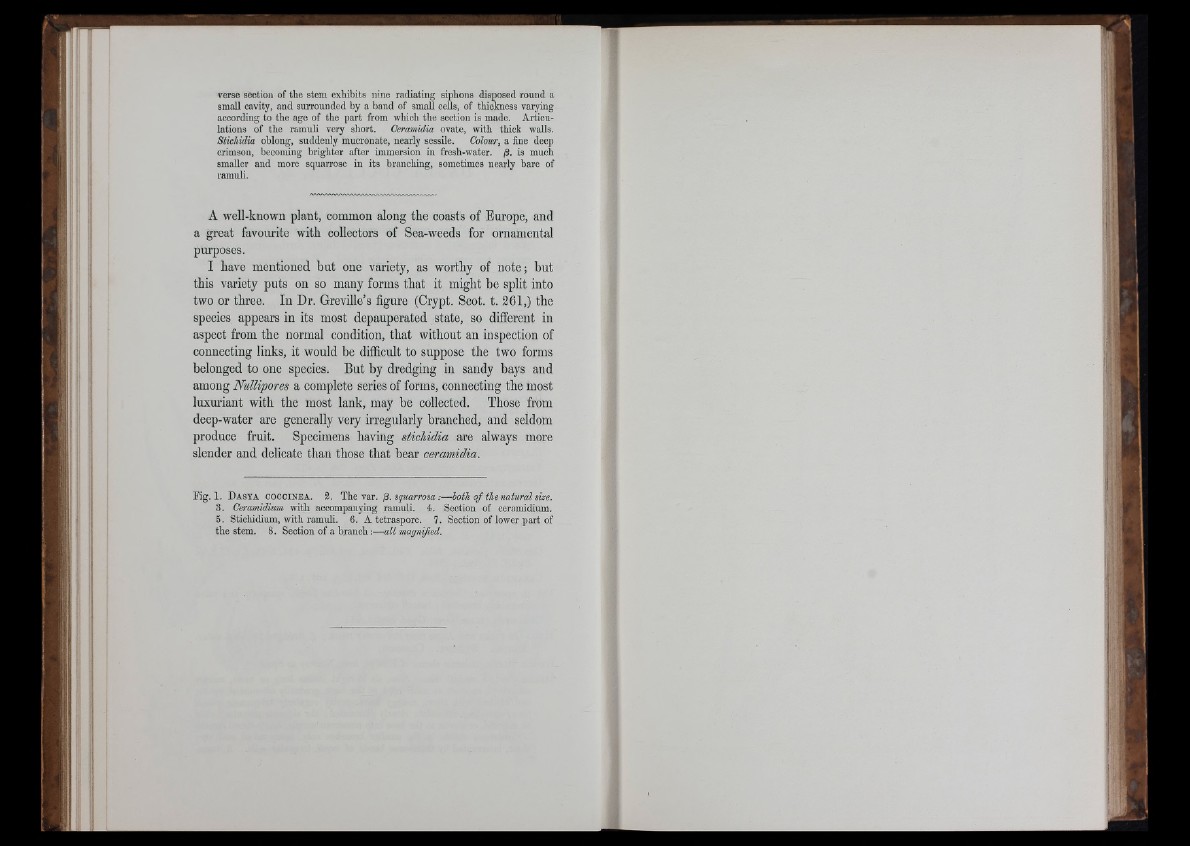
verse section of the stem exhibits nine radiating siphons disposed round a
small cavity, and surrounded by a band of small cells, of thickness varying
according to the age of the part from which the section is made. Articulations
of the ramuli very short. Ceramidia ovate, with thick walls.
Stichidia oblong, suddenly mucronate, nearly sessile. Colour, a fine deep
crimson, becoming brighter after immersion in fresh-water. (3. is much
smaller and more squarrose in its branching, sometimes nearly bare of
ramuli.
A well-known plant, common along the coasts of Europe, and
a great favourite with collectors of Sea-weeds for ornamental
purposes.
I have mentioned but one variety, as worthy of note; but
this variety puts on so many forms that it might be split into
two or three. In Dr. Greville’s figure (Crypt. Scot. t. 261,) the
species appears in its most depauperated state, so different in
aspect from the normal condition, that without an inspection of
connecting links, it would be difficult to suppose the two forms
belonged to one species. But by dredging in sandy bays and
among Nullipores a complete series of forms, connecting the most
luxm’iant with the most lank, may be collected. Those from
deep-water are generally very irregularly branched, and seldom
produce fruit. Specimens having stichidia are always more
slender and delicate than those that bear ceramidia.
Fig. 1. D a s y a c o c c in e a . 3. The var. S - s q u a r ro s a b o th o f the natural size.
3. Ceramidium with accompanying ramuli. 4. Section of ceramidium.
5. Stichidium, with ramuli. 6. A tetraspore. 7. Section of lower part of
the stem. 8. Section of a branch:—all magnified.